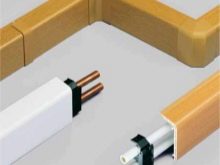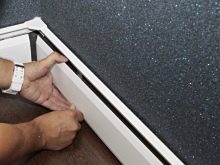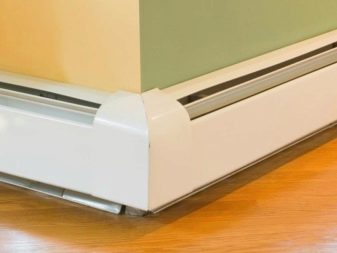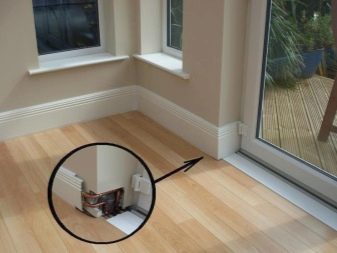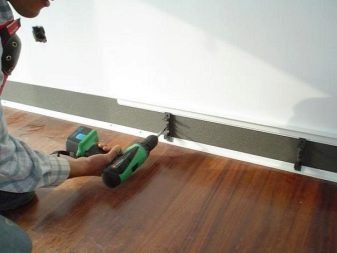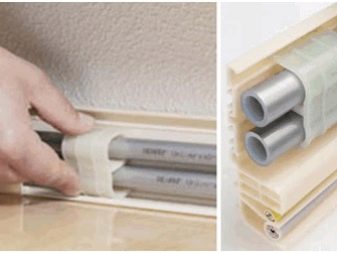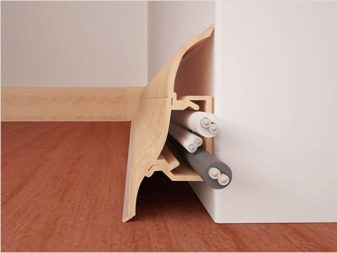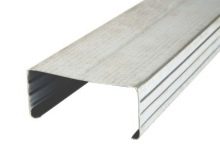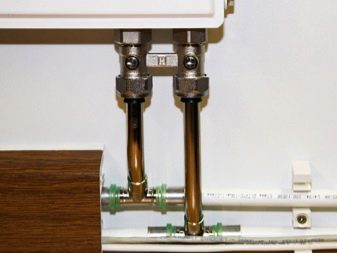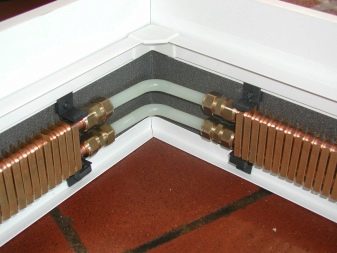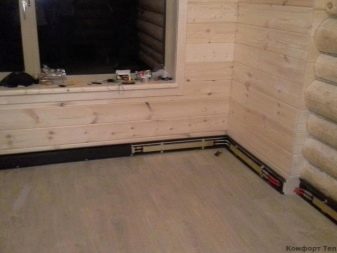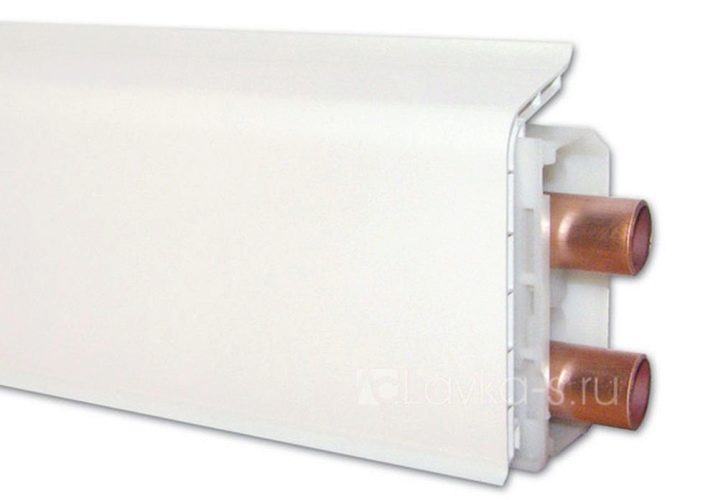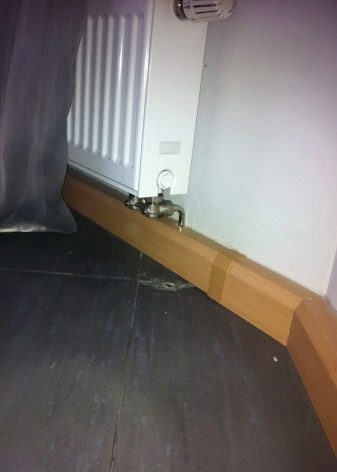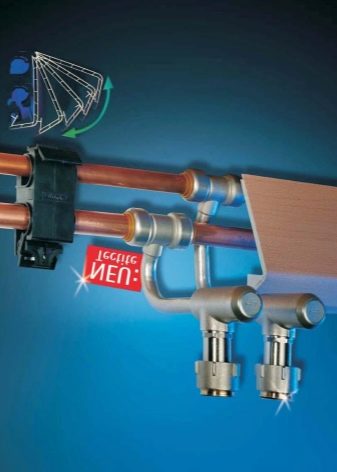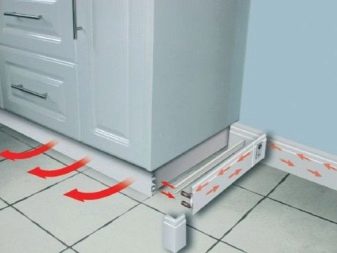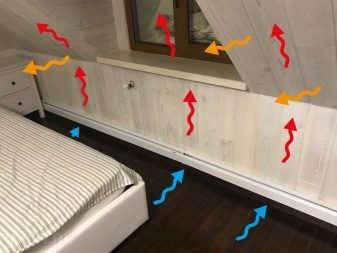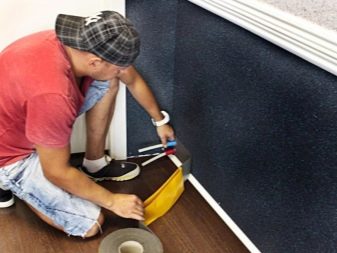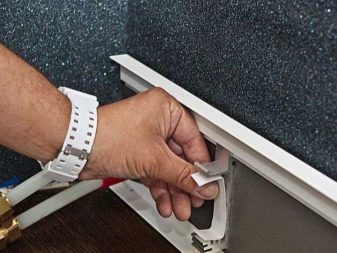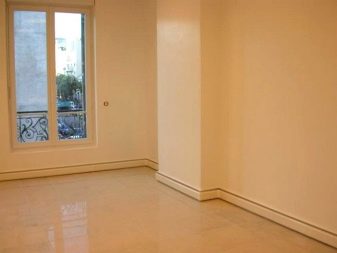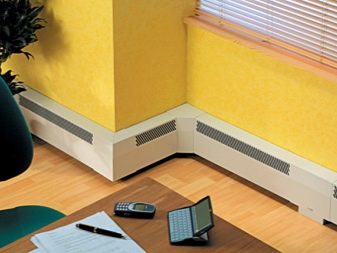Plinths for heating pipes: how to choose and install?
The systems used for home heating are constantly being upgraded and modified. Modern designs occupy a minimum of usable floor space, and also effectively cope with the task. These devices should include the system "warm plinth."
Special features
Among all sorts of devices and inventions for heating homes and apartments, plinth for heating pipes is not the last. In itself, this product is a decorative crib, the main function of which is to close the area where the base of the floor adjoins the wall of the room.
A feature of such products is the ability to produce such decorative elements from various types of material.and also not to be limited to strict and uniform color decisions and forms. Due to the specifics of the configuration of the plinth and its function, the idea arose of operating the element and the space under it to supply heating pipes.
Of course, in modern construction of buildings, skirting heating channels have not yet become so widespread, so in most of the rooms conventional batteries and radiators are still used. But the unique characteristics that are inherent in this technology of heat supply, favor its distribution.
According to the research, it was found that the incoming thermal energy is absorbed by a person by almost 100%. This applies to solar heat. But in residential premises, on the basis of the data obtained, a heated room is considered to be less comfortable for a person, whose walls still remain cold. This phenomenon is explained by the fact that the body best perceives thermal energy in the case when the air is heated horizontally, contacting with most of the skin.
It is these features and research that formed the basis for the development of a box for heating pipes.The construction works according to the scheme, based on which, the heat flux uniformly heats the entire surface of the wall, and as a result, the whole room is heated.
Advantages and disadvantages
In order to give an objective assessment of the plinths for heating pipes, it is worth exploring the positive and negative sides of such a floor system.
Among the advantages of the design are the following specific features:
- The distribution of heat in the room occurs in uniform flows throughout the area. The positive properties of infrared radiation include the ability to heat only translucent objects.
- The human body perceives such heating as a natural process.
- Bases during heating acquire a temperature that has almost the same value as the normal temperature of the human body. Therefore, imbalance is excluded when interacting with devices.
- All the bases, including the walls, the ceiling and the windows remain dry, there is no condensation on the surfaces, which is especially important for rooms with panoramic windows.
- For installation and installation of the system does not require the involvement of specialists, since the work on the arrangement is not particularly difficult.
- The presence of attractive elements of decor in the room has a positive effect on the overall interior.
- Such a design can be additionally equipped with temperature controllers, which will constantly maintain the optimum temperature inside.
- The average temperature of the coolant does not adversely affect the productivity of heating, since it is possible to save about 30% of the energy spent on heating.
Like any design, such a system has drawbacks. These include the following points:
- The length of the heating circuit hidden under the baseboard can not be more than 15 m. Its increase will lead to a decrease in the efficiency of the heating system. For larger buildings, the question of using distribution manifolds will arise.
- The gaps in the baseboards should not be blocked to maintain a uniform flow of heat.
- Products are not allowed to install various decorative elements that may adversely affect the level of heat transfer.
- The price of the design is quite high, because in the process of assembling it, expensive raw materials are used.
Species
Taking into account the coolant, skirting boards are divided into the following types:
- Liquid - in them water or antifreeze circulates. The temperature range is from 50 to 85 C. The heating level is regulated on the collector in manual or automatic mode.
- To electrical connect the heating elements. The system has a thermostat with a sensor that records the level of air heating in the room.
- The infrared system consists of a fixed tape of infrared thermal radiation. The design is connected in a similar pattern, which is used for electrical communications.
The plinth under the heating pipe can be made of wood, plastic or metal. Each variety includes a variety of options for appearance, which may vary in size, color and texture.
In addition, there is a separate group of baseboards, the manufacture of which is done by hand. The material is a CD profile.
How it works?
Warm skirting is used in conjunction with other devices to provide heating in the room. Individually, such panels are not used for heating.
The scheme of heating the air when connecting the structure to the central distributor is to raise the warm air masses to the ceiling and distribute the entire area of the room with the participation of walls in this process, which also transfer heat to the internal volume.
The modules that are responsible for heating are attached to the back of a plate made of aluminum. She, in turn, is fixed to the wall. From the outside, the system is also closed with a front metal plate.
The distribution of heat transfer fluid is carried out from the distribution manifold. This equipment contains consumption meters, taps, thermometers, pressure gauges and other measuring devices necessary for monitoring and adjusting the heating system.
A safe level of heating of the plinth is considered to be an indicator not exceeding 40 ° C, the maximum heating temperature is 80 ° C, and the air warms up to 20-25 ° C.
At the top and bottom of the design there are special slots. The lower gap allows to penetrate inside the cold air, which, heated from contact with the plates, leaves the system upward through a specially designated opening.
To increase the heating level, it is recommended to use materials with high thermal conductivity as a raw material for the manufacture of baseboards. In this regard, the most effective are aluminum or copper products.
As for heat carriers, in this case, the presence of a product with elevated temperature indices is not necessary, since the main function of the structure is to heat as much of the wall as possible, which will radiate thermal energy.
Manufacturers Overview
Most of the thermal plinth systems is a universal design. Brand products Bestboard It belongs to this group of products, since by pulling the heating element and connecting the system to the boiler, it is possible to replace the electric variant of heating the room with a water one.
It should be noted system of plinth channels Hz. It includes fastenings, a decorating profile, nodes of heating devices and a network of power and low-current lines.
Simplex - plinth system for heating pipelines, which is notable for its collection of plastic elements.Having bought similar products, you can hide coolants with a diameter of up to 22 mm inside.
Criterias of choice
When choosing a system of warm plinth, it is worth considering that infrared and electrical systems have significant advantages compared to the water structure. These features are relevant for private homes and apartments. The main characteristic of such systems is their ability to work all year round, since they do not depend on the heating period.
To calculate the benefits from the use of plinth heating, one should take into account such nuances as the presence of other heat sources in the room, the level of insulation of the enclosing products in the structure, the possibility of providing the system with electric power in the proper amount or installing the boiler equipment.
For those cases in which the use of an autonomous source of heat is expected, the question of saving fuel consumption will be relevant.
It should be borne in mind that the system of warm baseboards due to automatic control works for about 50% of the total time, as a result of which you can save about 30% of fuel per year.
Installation details
For mounting the structure there are no restrictions regarding the type of base coating. You can do the work yourself, but strictly following the rules of laying coolants around the room.
There are specific features of installation in each individual case, based on the type of system. In the case of an electrical system, safety precautions must be observed during the installation of electrical cables. The water circuit requires an understanding of how it will be connected, since several options are possible - through a central heating system or through an autonomous-type heating boiler.
The calculation of the number of necessary elements and components will be individualized for each specific case, since one should take into account the area of the room, the type of materials from which the walls are made, the presence of insulation in them.
The technology of installation works includes the following steps:
- The installation process must begin with the installation of fittings for heating elements.
- The pipeline from the boiler can be stretched along the lower edge of the overlapping walls or under the floor covering.
- Installation of radiators in pre-determined locations.
- Next, the pipeline is laid from the collectors to the radiators.
- At the final stage it is necessary to test the heating, for this you need to start the device.
- After installing all the structural elements and verifying reliable fixation of parts, we hide the structure for decorative products. The visual hiding of a system can enhance its aesthetic appeal.
Filling the system on a mandatory basis should be accompanied by cleaning and razduszhushivaniem all sites. Problem areas can be identified by touch, since they will differ in the degree of heating from the rest of the pipeline.
Useful tips
In order not to be mistaken when choosing alternative heating systems, such as a warm baseboard, you should consider the basic requirements that they must meet:
- Economy and energy efficiency. The last factor is the use of technologies that reduce the costs of all types of energy that will arise during the operation. Saving resources does not mean abandoning their consumption, but lies in their rational exploitation.
- The heating system must be reliable and durable. Therefore, the manufacturer of the structure for heating the room must provide the consumer with products with minimal risk of an emergency during use and a high level of maintainability of the system. This together will have a positive impact on the operational life of the system.
Structures should be characterized by stable hydraulic characteristics as well as thermal resistance.
On how to close the pipe and screw the baseboard, see the following video.


